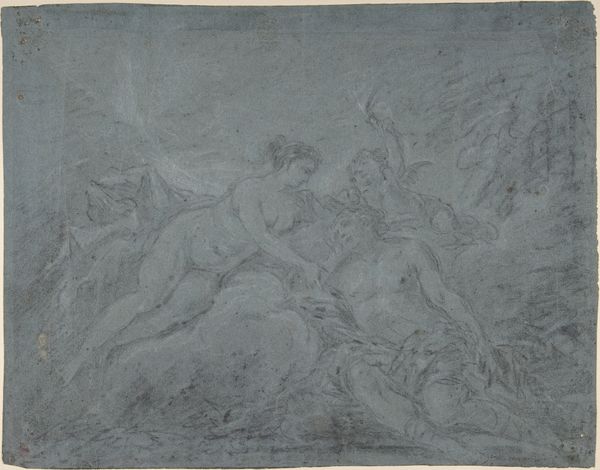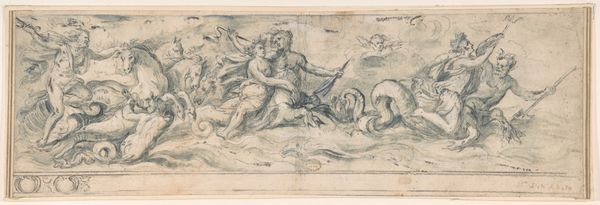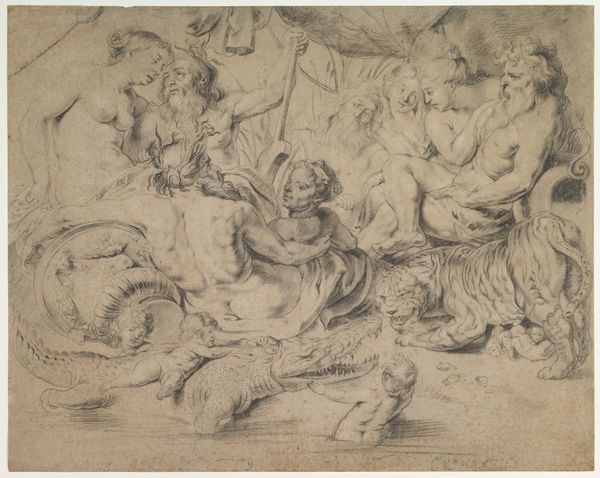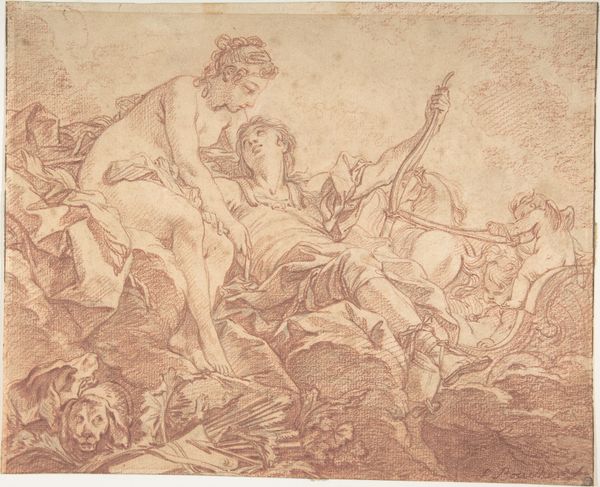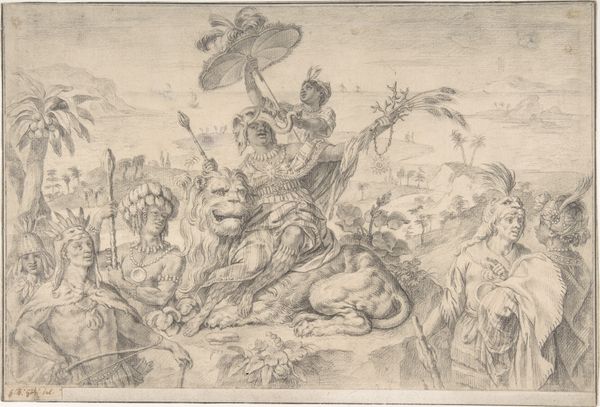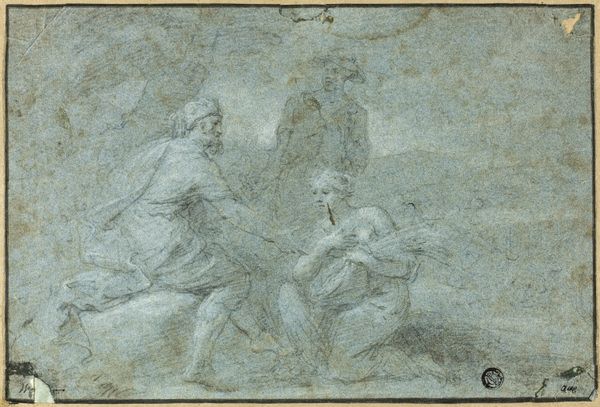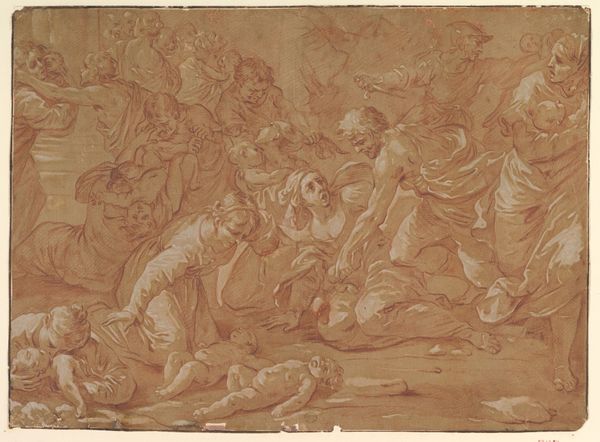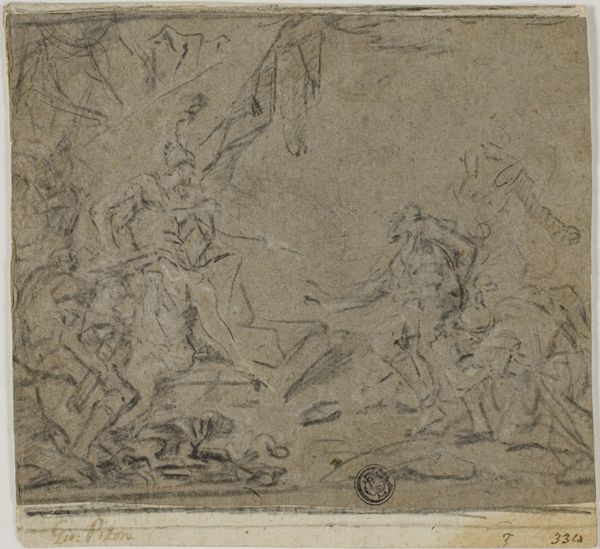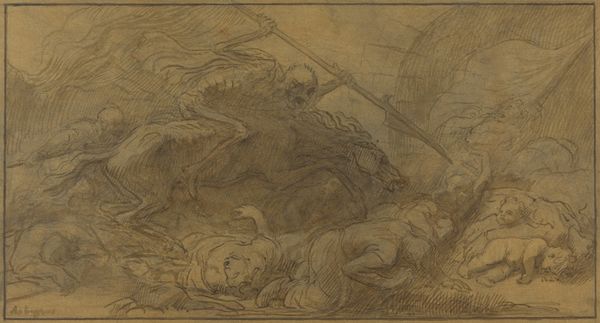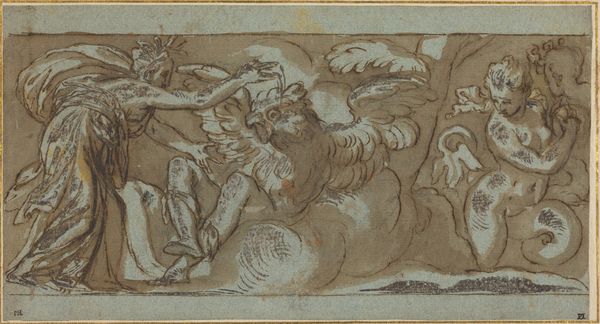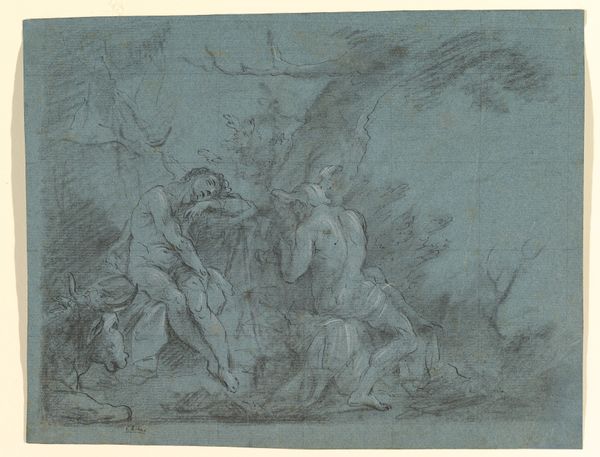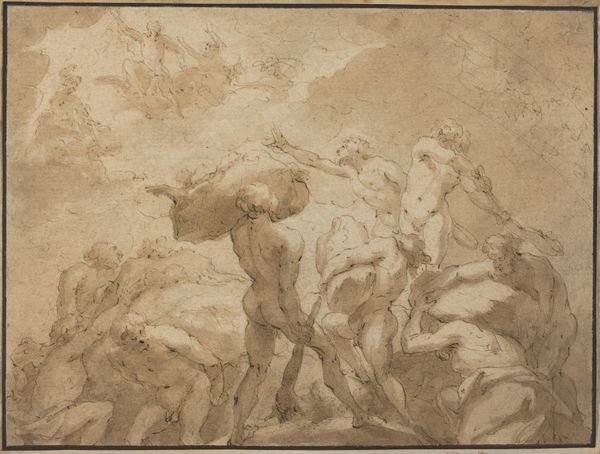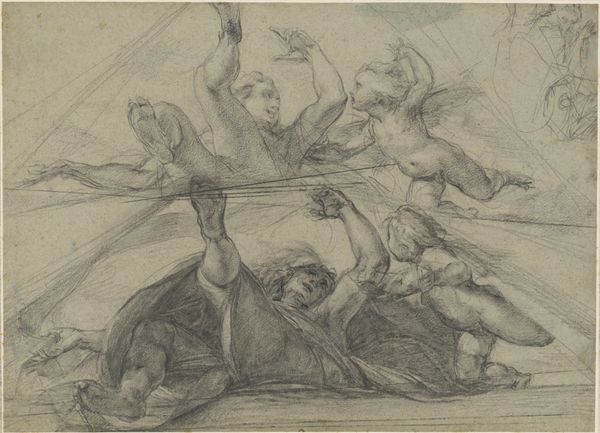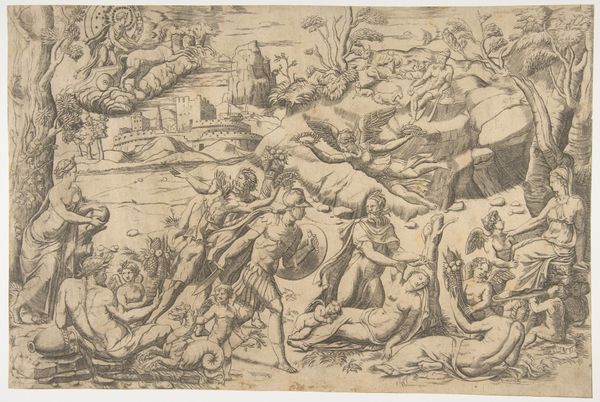
drawing, print, etching, intaglio
#
drawing
#
narrative-art
#
baroque
# print
#
etching
#
intaglio
#
figuration
#
history-painting
Dimensions: Sheet: 9 5/8 × 11 5/8 in. (24.5 × 29.5 cm)
Copyright: Public Domain
Editor: Here we have Matthias Stom's etching "Cain fleeing after having slain Abel," made sometime between 1635 and 1645. The composition strikes me as off-kilter and disturbing. What do you see in this piece? Curator: Well, first, the stark light and shadow, typical of the Baroque, immediately grabs attention. But beyond the drama, look closer. Do you see how Cain’s fleeing form echoes the posture of his slain brother, almost superimposed, in a way? Editor: I hadn't noticed that! What does that signify? Curator: It could represent the inescapable bond, the shared blood. Think of Cain's mark, it signifies divine protection but also perpetual alienation. What emotions are conjured in your mind? Editor: Certainly, a sense of guilt and desperate flight, that glance over the shoulder betrays fear, of both human and divine reprisal. And there seems to be a symbol above what seems to be an altar... what can it mean? Curator: Note the altar's seemingly rejected offering... Is it possible the artist hints at a cultural memory embedded in ritual and sacrifice and guilt and divine judgment. Even his very movement carries an echo of the violence he’s committed. It serves almost like a mirror held up to human fallibility, don't you agree? Editor: It is almost like the mark is inside of him and not a symbol given by God. I will definitely carry all these ideas in mind as I learn more about early etchings. Curator: I agree, studying this, our reflection becomes unavoidable. A rewarding piece!
Comments
No comments
Be the first to comment and join the conversation on the ultimate creative platform.
